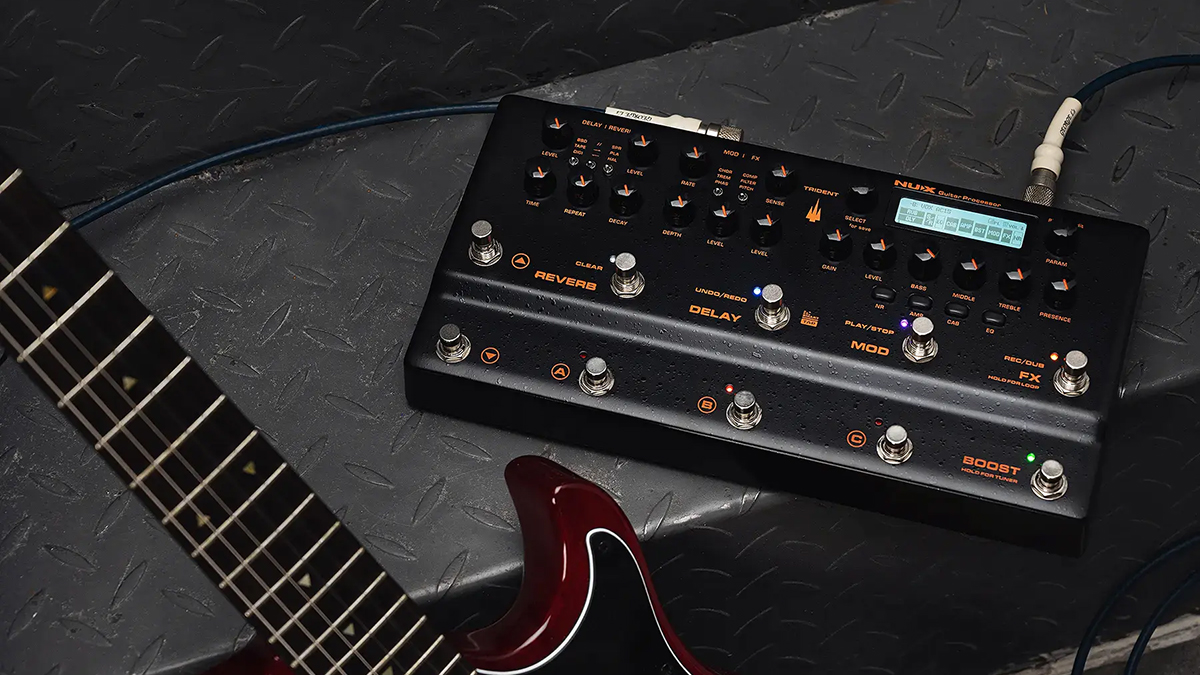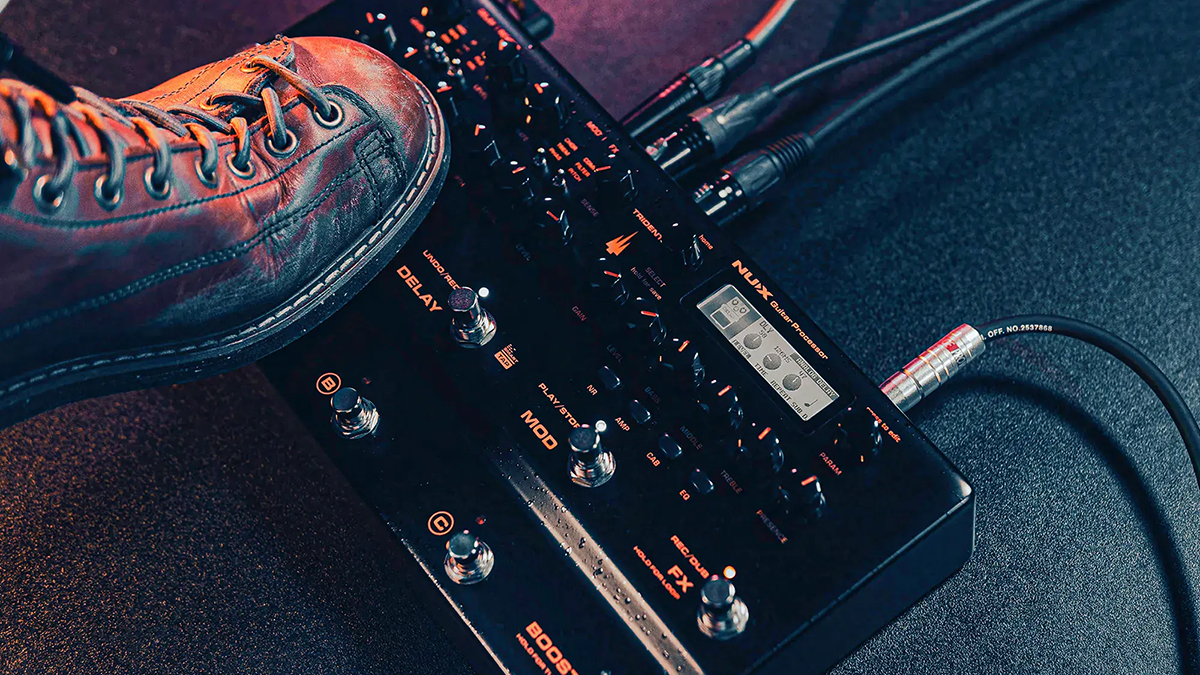
NAMM 2023: NUX has brought the multi-effects party to this year’s NAMM show with the release of the Trident – a robust-looking piece of kit that promises to be an entire guitar rig in one unit.
Built using a one-piece die-cast aluminum chassis, the Trident’s exterior is pretty darn impressive, with the sleek topography featuring a wealth of onboard control knobs and foot switches that aim to promote intuitive operation and usability.
However, though the hardware deserves an honorable mention, it’s the software that steals the show, with the built-for-live-performance Trident offering an array of onboard effects, a host of sound-sculpting parameters and – perhaps most importantly – the powerful, newly updated TSAC-4K amp modeling algorithm that vows to supply emulations of numerous amp models.
A bit more on the TSAC-4K, because the Trident’s beating heart is an impressive appointment. According to NUX, it’s twice as complex as previous versions, and works alongside analog circuits to achieve “a clear sound with low noise levels”.

In practice, 27 amps are included, with each model offering High and Low inputs, four inputs for patch cable jumping, toggle switches for voicing and other tone-tweaking extras.
By the looks of things, a host of Marshall, Fender, Matchless, Hiwatt and Roland amps are included in that list of 27, from the Roland JC40-inspired “Jazz Clean” and Fender-modeled “Twin Rvb”, all the way to the Vox-esque “Class A30” and high-gain “Hiwire”.
The TSAC-4K works in tandem with an IR Loader, with the Trident coming equipped with 27 cab IRs that can be sonically altered by a suite of the usual digital cab controls: four microphone models with three positions are available.
All the latest guitar news, interviews, lessons, reviews, deals and more, direct to your inbox!
As expected, this library of Impulse Responses can be expanded with third-party IRs via the Trident edit software.
Control-wise, the amps can be manipulated via onboard Gain, Level, Bass, Middle, Treble and Presence controls, which can be found underneath a small display screen.


Notably, the Trident recruits two DSPs – one for the aforementioned amps, and one concerned with all the effects. These are controlled on-pedal, with the unit featuring reverb, delay and a broad buffet of modulation effects.
These are located on the left side of the pedal, which has dedicated Delay/Reverb and Mod/FX control sections. The former has knobs for Level, Time, Repeat and Decay, and three toggle switches that navigate Spring, Plate and Hall Reverbs, as well as delay times and modes.
As for modulation, two toggle switches flick between Chorus, Tremolo and Phaser, and Compressor, Filter and Pitch, with Rate, Sense, Depth and Level knobs completing the control set.
The array of footswitches, meanwhile, work to both trigger effects and recall amp models, and engage extra features such as the built-in tuner, additional Boost function and 60-second phrase looper.
As well as operating as a de facto all-in-one guitar rig, the Trident can also be utilized as an audio interface, thanks to the USB-C output. Other connectivity options include MIDI ins and outs, and send and return jacks.
An official release hasn't been confirmed, but NUX has revealed the Trident will be available for around the $450 mark.
At first glance, it looks to be a direct competitor to Blackstar's recently released Amped 2, which came appointed with a very similar set of features, including onboard effects and amp models.
More information can be found over on NUX's website.

Matt is the GuitarWorld.com News Editor, and has been writing and editing for the site for five years. He has a Masters in the guitar, a degree in history, and has spent the last 19 years playing everything from blues and jazz to indie and pop. During his GW career, he’s interviewed Peter Frampton, Zakk Wylde, Tosin Abasi, Matteo Mancuso and more, and has profiled the CEOs of Guitar Center and Fender.
When he’s not combining his passion for writing and music during his day job, Matt performs with indie rock duo Esme Emerson, and has previously opened for the likes of Ed Sheeran, Keane, Japanese House and Good Neighbours.
